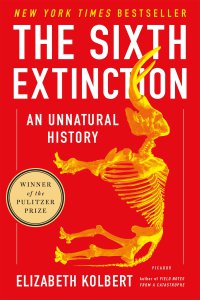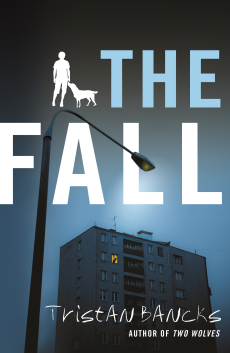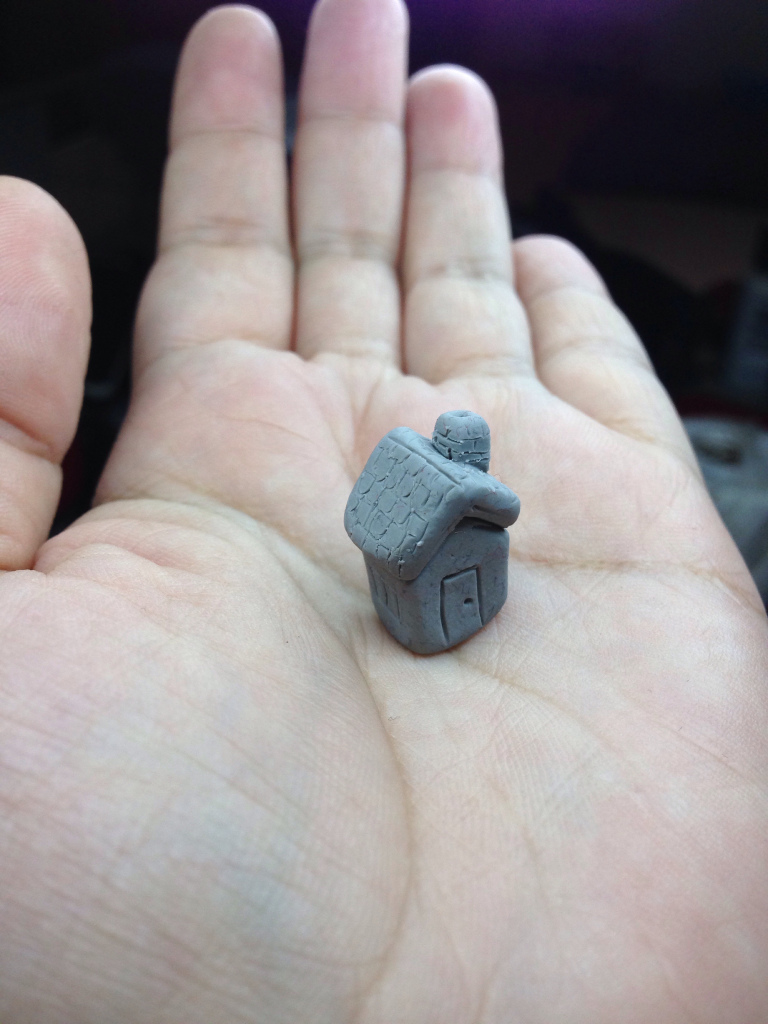 The cataclysm, writes Elizabeth Kolbert, is us.
The cataclysm, writes Elizabeth Kolbert, is us.
As with Kolbert’s earlier Field Notes to a Catastrophe, I would make this required reading in every school in the land. Say, high school. Freshmen would read Field Notes. Sophomores would read The Sixth Extinction. If I could wave a wand and make it so, I would. Will human ingenuity be able to outrun the pending disaster? I’m dubious. But it will only happen if we start with education and if we develop a rising population of citizens determined to tackle this as the only issue that counts.
Sure, there are plenty of other five-alarm issues but this one is happening. It’s global. It will touch all of us. And we can choose to care or choose to hope all the evidence is wrong. (Good luck with that hope thing.)
We can point to a bad hurricane season and say “anomaly.” We can point to an awful December in California with raging wildfires and say “anomaly.” We can point to a melting polar ice caps and say, well, the globe is constantly changing. We can bury our heads, quite literally, in the sand and keeping drilling for more oil, more gas, and frack our way to cheap energy. And, maybe, hope it all works out?
The Sixth Extinction, as Kolbert writes in her introduction, asks us to confront the horror of what’s coming. Yes—take a look around. It’s very possible that somewhere between 20 percent and 50 percent of the living species on the planet will be gone by the end of the century. That vanishing act is the result of global warming. It’s not an early warning. It’s a “now” warning.
Kolbert starts with the golden frogs in a town in the middle of a volcanic crater, formed about a million years ago, in central Panama. She looks at auks and ammonites, mastadons and bats. She gives us the overview about French naturalist Georges Cuvier and some lesser-known (to me) thinking developed by Charles Darwin. She swoops in on the Amazon rainforest, heads to the Great Barrier Reef and even pokes around her own backyard. But finding signs of global warming and its tangible impact on the planet is easy. “Such is the scope of the changes now taking place that I could have gone pretty much anywhere and, with the proper guidance, found signs of them.” Die-offs are everywhere.
Species go extinct all the time. Wikipedia reports that more than 99 percent of all species that ever lived, amounting to over five billion species, are thought to be extinct. It’s hard to wrap your head around that number or fact (at least, for me). But the number of mass extinctions, since the concept of extinction was first grasped a mere two centuries ago, is only five. So Kolbert narrows her focus on species that are emblematic of those creatures that have already gone extinct, like the auk; and species that may be trying to get our attention now, like the bat. And, in the process, makes a case that we are now on the cusp, perhaps a century or so deep into, Number Six.
The power in The Sixth Extinction (winner of The Pulitzer Prize) s how Kolbert reveals connectivity and inter-dependence between the fragile habitats of the species where she focuses her lens—and the way that man’s activity and decisions on how to live on the surface of the planet are dramatically altering the behaviors and environment for all other animals that call Earth home.
There is ample misery to contemplate in The Sixth Extinction, but the deteriorating condition of the major reef systems is acute. Kolbert heads to One Tree Island off the coast of Australia. Reefs are curious. “They are part animal, part vegetable, and part mineral, at once teeming with life and, at the same time, mostly dead,” writes Kolbert. Reefs have mastered the “alchemy” of calcification, but increasing acidification of the water is making them sick. The change in the water’s chemistry began to change with the onset of the industrial revolution. Kolbert’s explanation of the impact of carbon emissions on the oceans is, in short, brutal. Scary. Very, very scary. We are asking the oceans to carry too much of a burden from what we’re pumping into the air each and every day.
But acidification isn’t the only stress on coral reefs. “The roster of perils includes, but is not limited to: overfishing, which promotes the growth of algae that compete with corals; agricultural runoff, which also encourages algae growth; deforestation, which leads to siltation and reduces water clarity; and dynamite fishing, whose destructive potential would seem to be self-explanatory.”
Kolbert is like a geologist probing for soil samples in a fresh tract of land. No matter where she dips her reportorial stick, it seems, there is change related to the climate. And the evidence is, well, not in question. Our environment has been corrupted.
By us.
Poking around by the history of the term ‘Anthropocene’ (and Kolbert’s chapter on this issue of naming our era is compelling stuff, too), I ran across an article about the debate about the Anthropocene concept in Smithsonian. In 1992, New York Times reporter Andrew Revkin suggested the term ‘Anthrocene’ and, years, later, that morphed into a term that seems to have taken hold, ‘Anthropocene.’
(In 1992.)
The Smithsonian article, from 2013, discussed how the term for the Holocene epoch, which began 11,700 years ago after the last ice age, is outdated.
“Anthropocene has become an environmental buzzword ever since the atmospheric chemist and Nobel laureate Paul Crutzen popularized it in 2000,” writes Jonathan Stromberg in Smithsonian. “This year, the word has picked up velocity in elite science circles: It appeared in nearly 200 peer-reviewed articles, the publisher Elsevier has launched a new academic journal titled Anthropocene and the IUGS convened a group of scholars to decide by 2016 whether to officially declare that the Holocene is over and the Anthropocene has begun.”
So it’s a good thing, to my way of thinking, that we’re down to choosing what labels to put on our new epoch. But a comment from Revkin put all of Kolbert’s work, for me, into perspective.
“Two billion years ago, cyanobacteria oxygenated the atmosphere and powerfully disrupted life on Earth,” he says. “But they didn’t know it. We’re the first species that’s become a planet-scale influence and is aware of that reality. That’s what distinguishes us.”
Um, let’s hope.
++
Previously reviewed: Field Notes From A Catastrophe
Advertisements Share this:




